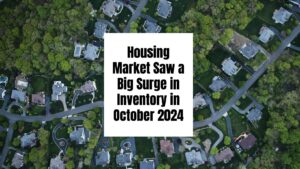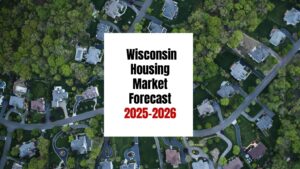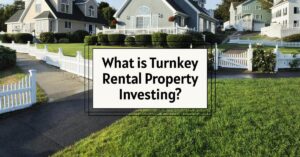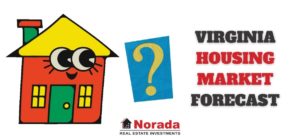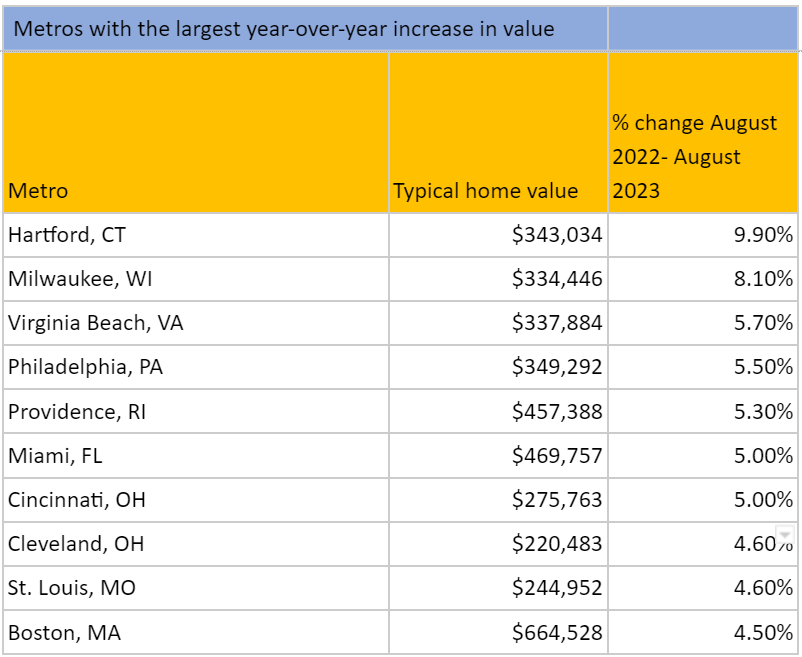Housing Market Trends: October 2024 Insights
Key Takeaways
- 29.2% increase in homes actively for sale compared to last year (Realtor.com).
- 4.9% rise in newly listed homes, despite a sharp decline from the previous month.
- Median home price remains static at $424,950; however, the median price per square foot has increased by 2.1%.
- Homes are averaging 58 days on the market, the slowest October in five years.
- Prices in swing states reflect a closer relationship to red than blue states, indicating market nuance.
Overview of Current Housing Market Trends
As of October 2024, the housing market continues to experience a striking surge in inventory, with a 29.2% increase in homes actively for sale compared to October 2023. This marks the twelfth consecutive month of growth in inventory levels, which are now at their highest since December 2019. The total count of unsold homes, which includes those under contract but not yet closed, has escalated to 22.5% higher than last year (Realtor.com).
Moreover, there has been a clear upward trend in seller listing activity during October, with a recorded 4.9% increase in newly listed homes compared to the same period last year. This comes despite a notable dip from September's impressive growth of 11.6%. The recent rise in mortgage rates to a two-month high likely hampered further increases in new listings, as many potential sellers may hold off on listing their homes when borrowing costs are uncertain.
Interestingly, September's growth in new listings has a strong correlation with the rise in pending home sales seen across major markets in October. Metropolises such as Seattle, Boston, and San Diego are telling examples where a spike in new listings in September has led to a notable uptick in pending sales, indicating that sellers are genuinely in the market to buy replacements for their homes.
Days on Market and Price Trends
A critical metric to assess housing market health is the average number of days homes spend on the market. In October, the typical home spent 58 days on the market, which is an increase of eight days compared to last year. This represents the slowest pace for homes in October for five years, underscoring the current environment's unique characteristics.
The extended time on the market implies that buyers are taking more time to weigh their options, likely influenced by today's economic conditions and market uncertainties. It is important to note, however, that the average time spent on the market remains shorter than during the pre-pandemic years.
Regarding pricing, the median home price has remained relatively flat, standing at $424,950—a mere $50 lower than last month. This stability signals that while inventory has increased, it has not yet forced price reductions in a significant way. Yet, when we consider the median price per square foot, there’s been a 2.1% increase, indicating a growth in the demand for smaller, more affordable homes. Interestingly, the overall share of homes seeing price cuts holds steady at 18.6%, mirroring levels from last year, which hints at a more stable adjustment in pricing strategies among sellers.
Regional Insights on Active Listings and Trends
When analyzing the regional housing market trends, a consistent pattern emerges where all four main U.S. regions reported increases in active inventory when compared to last year. The South led the charge with an impressive 34.0% growth, while the West saw a solid 33.6% increase. Midwestern regions experienced a rise of 19.8%, and the Northeast trailed with a 14.3% uptick.
Additionally, within the largest 50 metropolitan areas, every single one recorded growth in listings. The markets with the most substantial increases included San Diego, which saw a staggering 63.5% growth, followed closely by Seattle at 60.5% and Denver at 59.5%. While these numbers can be promising, it is critical to compare them against pre-pandemic levels—many metros still fall short of the inventory levels seen between 2017 and 2019, with only 13 markets displaying higher levels than the pre-pandemic norm.
Impact of Mortgage Rates on Seller Activity
The landscape of the housing market is heavily influenced by fluctuations in mortgage rates. After a period of declining rates earlier in the summer, seller activity saw an uptick as many homeowners were encouraged to list their homes, having benefited from lower monthly payments. However, recent increases in mortgage rates during October likely tempered the momentum observed in September, holding back new inventory levels.
Empirical data shows that as the number of new listings increases, so too does the number of buyers entering the market. This correlation is especially present in markets that experienced significant listings in September, such as Seattle, where pending listings surged by 50.5% following the spike in new listings. The interplay between new listings and pending sales creates an environment where heightened availability can stimulate buyer interest, solidifying the housing market's ongoing recovery.
Analyzing Market Dynamics in Swing States Versus Red and Blue States
One of the more intriguing patterns emerging from this month’s housing market trends is the pricing dynamics across different political regions. Notably, homes in swing states have demonstrated a pricing structure more akin to red states rather than blue states. On average, homes in swing states are about 30-40% lower in cost per square foot than their blue state counterparts, yet 10-20% higher than prices in traditional red states.
This observation has real implications for buyers and sellers alike, as pricing strategies in swing states may offer unique opportunities for both investment and relocation. It has become increasingly clear that political factors can impact real estate values, thereby influencing buyer sentiment and market strategies in different regions.
Conclusion:
The October 2024 housing market presents a tapestry of trends that are critical to understanding the current state of real estate. The sustained rise in inventory reflects a market that is becoming more balanced, moving away from the intense competition seen in previous years. With homes spending more time on the market and pricing remaining relatively stable, both buyers and sellers are adjusting to a more predictable market environment.
The repercussions of rising mortgage rates and shifting political landscapes will likely continue to influence buyer and seller decisions in the approaching months. While October exhibited solid trends across inventory and pricing, close attention to these evolving dynamics is essential for all stakeholders involved in the housing market.
Also Read:
- Housing Market Forecast for the Next 2 Years: 2024-2026
- Housing Market Predictions for Next Year: Prices to Rise by 4.4%
- Housing Market Predictions for the Next 4 Years: 2024 to 2028
- Real Estate Forecast Next 5 Years: Top 5 Predictions for Future
- Real Estate Market Predictions 2025: What to Expect
- Is the Housing Market on the Brink in 2024: Crash or Boom?
- 2008 Forecaster Warns: Housing Market 2024 Needs This to Survive
- Housing Market Predictions for the Next 2 Years
- Real Estate Forecast Next 10 Years: Will Prices Skyrocket?
- Housing Market Predictions for Next 5 Years (2024-2028)
- Housing Market Predictions 2024: Will Real Estate Crash?
- Trump vs Harris: Which Candidate Holds the Key to the Housing Market (Prediction)
